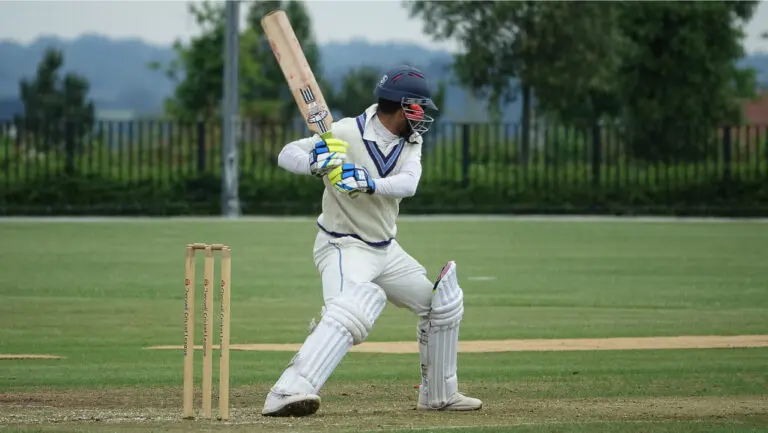Posted on January 22, 2019 at 06:18 AM

When T20 was introduced - everyone thought it would be the death of spin bowling. Surely, slow bowling in a game that was designed to favor batsmen and generate huge crowd excitement would mean that spin bowling would be the least favored option of T20 captains around the globe. However, Slowly but surely - spin bowlers adjusted their craft to become more impactful and push back the need to create power onto the batsmen.
I've always been a huge fan of cricket - I can remember as a kid watching Sheffield shield games with my Dad at the Gabba - and as a kid - the excitement that came with watching my favorite player Ian Healy with a huge crowd of 5000 people. I remember one day in particular when we watched the Queensland Bull's playing day three against the NSW Blue's - and QLD put an amazing score of 280 on the board over a day and a half. I remember as a kid the excitement of being in the crowd, feeling the atmosphere and watching a game that I loved.
I could only imagine what it is like to be a kid today - sitting in a stadium with an average crowd of 20,000+ watching not only some of Australia's best, but some of the worlds best - putting on 400 runs in an amazing show in only 3 and a bit hours.
I decided to test this out - I had my young nephew visiting from New Zealand and he had never been to a cricket game before - even though he rates himself as probably the best emerging cricket talent to come out of New Zealand in the next 5 years. Entering the stadium, I was the best uncle possible and bought him every piece of Sydney Thunder merchandise I could on our way to the seats on the beach - which is another great innovation from T20 cricket in Australia. During the warm ups - my Nephew was in awe of the players out on the field - the likes of Joe Root, Jos Butler, Shane Watson, Chris Lynn, Baz Macullumn, Daniel Vittori, and Wade Seccombe all within meters of our seats.
About 10 overs into the game - my Nephew asked - when will the Heat start their power hitting. Mind you - at this time the score was nearly 100 runs on the board in an effortless display of T20 batting - but my 10 year old nephew was right - there wasn't any power hitting yet. The score was running at almost 10 an over through well played, traditional cricket shots. It wasn't the normal slog fest we had expected to see in a T20 game. And as to be expected - with a solid foundation on the board - the Heat started to open their shoulders and head to “Power hitting” mindset. What we would normally expect to see a team elevate from 10+ per over after 10 overs to a score well in advance of 200 - the heat, unfortunately failed in this situation - loosing 4 wickets for 5 runs in about 4 overs. All of a sudden the solid foundation build by aggressive traditional cricket had been lost and the game was evenly poised - with a final score of 186.
Unfortunately - the rain got in the way during this game - but not before Shane Watson dispatched possibly the biggest six at spotless stadium ever delivered. It wasn't anything fancy, just another solid cricket shot from an athlete who can hit a cricket ball. Through an invitation from StanceBeam - I was then lucky enough to attend a BBL training session and I got to experience first hand how the modern player prepares and develops their game in preparation for a T20 game.
Watching the net session - we had bowling machine's set up and players spending hours refining and practice their shots. Straight drives, cover drivers, pull shots - all with incredible strength and deliverance. We were lucky enough to be given an insight into the training session watching the stats come from the Stancebeam Striker - directly onto our I-phones. Stroke after Stroke, we are watching the stars of the BBL time each shot to perfection. It wasn't very often that the shot efficiency wasn't at 100% with these players. The power indexes as you would expect were high - well timed shots, hit well - always produce high scores. But what impressed me the most was how much the best players were able to adjust their bat speeds to each shot. The best players weren't just swinging as hard as they can every shot - their skill's lye in being able to time the ball to perfection and swing hard when it's needed to create the additional power onto the ball.
It then dawned on me - Power Hitting has also evolved like spin bowling did at the start of T20 cricket. No longer is it purely about bat speed and slogging the ball - T20 batsmen have evolved to read the pace of the game, find the gaps again and integrate more traditional shot play into their games, especially in the early overs. The ability for games to develop because of this adopted form of power hitting is sending scores higher than ever in this year's BBL season.
All I can say is - bowlers you better start looking for the next stage of evolution - as now technology is being introduced into the batsmen's training with StanceBeam - we may see batmen's continue to effortlessly pile on the runs with this more conventional style of power hitting.
Share on

Content from the team with a passion for cricket.